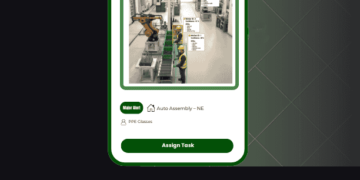Finding a clinical preceptor is an essential step in completing a healthcare-related program. Whether you are a nursing, medical, or physician assistant student, securing a qualified clinical preceptor can be a challenging but rewarding experience. A clinical preceptor not only serves as a mentor but also plays a pivotal role in shaping the hands-on learning experience that will guide professional growth.
What Is a Clinical Preceptor?
A clinical preceptor is a healthcare professional who provides practical, real-world training to students in their field. The preceptor offers direct supervision, guidance, and mentorship as students apply theoretical knowledge to clinical practice. Preceptors are typically experienced practitioners in the student’s area of study, such as physicians, nurse practitioners, or other specialists. They help students develop critical skills, clinical judgment, and professionalism that will be necessary once they graduate.
Why Is Finding a Clinical Preceptor Important?
Finding the right clinical preceptor is crucial to ensuring a positive and effective learning experience. A good preceptor not only teaches technical skills but also imparts essential soft skills like communication, teamwork, and professionalism. Additionally, a well-matched preceptor can help a student navigate the often complex dynamics of real-world clinical environments, enabling them to build confidence and competence.
In healthcare programs, clinical rotations often represent a significant portion of the curriculum, making the preceptor relationship invaluable. The quality of this experience can influence a student’s readiness for practice and even impact future employment opportunities. A poor clinical experience or a mismatch with a preceptor can hinder learning and delay graduation, making the search for a clinical preceptor all the more critical.
Steps to Finding a Clinical Preceptor
1. Understand Your Program’s Requirements
Before beginning the search for a clinical preceptor, review the guidelines and requirements provided by your educational institution. Each program may have specific criteria regarding the type of preceptor you need (such as qualifications, experience, and specialty), as well as the number of hours or weeks needed for clinical rotations. Some programs may also provide lists of approved preceptors or partner organizations that offer placement opportunities.
Knowing these details will ensure that you target preceptors who meet the necessary standards and will allow you to complete your rotation requirements on time.
2. Start Early and Plan Ahead
Finding a clinical preceptor can take time, especially in fields with high demand for placements, like nursing or physician assistant programs. Starting the search early will provide ample time to secure a preceptor and avoid last-minute stress. Many preceptors have limited availability, and popular preceptors may be booked months in advance, so beginning your search as early as possible will increase your chances of success.
Create a timeline with key dates for your clinical rotation and break down your search process into manageable tasks. Start by identifying potential preceptors, gathering contact information, and reaching out well in advance.
3. Use School and Program Resources
Many schools have established relationships with healthcare facilities or specific clinicians who are familiar with the clinical preceptorship process. Reach out to the clinical placement coordinator or your academic advisor to inquire about any preceptor databases, resources, or partnerships that may be available. These connections can help streamline the process, as institutions often have established protocols for placing students with preceptors.
Some schools may also provide formal preceptor matching services, where they connect students with available preceptors based on the student’s specific needs and interests. Take advantage of any support your school offers in the search process.
4. Network within Your Professional Community
Networking is a valuable tool when searching for a clinical preceptor. Reach out to professors, former classmates, and other healthcare professionals you know. Often, the best leads come from personal connections. Your professors or mentors in the field may have recommendations for preceptors, or they may be able to introduce you to someone who would be a good fit.
Attend professional conferences, workshops, or events where healthcare professionals gather. Networking in these environments can help build relationships and open doors for clinical placements. You might find preceptors who are willing to take on students or learn about opportunities through word of mouth.
5. Research Potential Preceptors
When researching potential preceptors, consider factors such as their level of experience, teaching ability, and specialty area. A clinical preceptor with a wealth of experience in your field can offer valuable insights and guidance. However, the ability to teach and provide constructive feedback is equally important. Consider whether the preceptor is someone who will be patient and willing to invest time in mentoring you.
Look for preceptors who practice in settings relevant to your career interests. For example, if you’re a nursing student interested in pediatrics, seek out preceptors who specialize in pediatric care. This alignment will make the clinical experience more relevant and fulfilling.
6. Make Initial Contact
Once you have identified a potential preceptor, make initial contact to introduce yourself. Prepare a professional email or phone script to explain who you are, what program you are in, and what you are seeking. Be respectful of their time, as healthcare professionals are often busy. Include a brief explanation of the requirements for your clinical rotation, the dates, and any other relevant details.
In your communication, emphasize your enthusiasm for learning and your commitment to the profession. Personalize your message to show genuine interest in their work. This approach demonstrates professionalism and increases the likelihood of receiving a positive response.
7. Conduct an Interview
If a potential preceptor expresses interest in mentoring you, it is essential to conduct an interview. This allows both you and the preceptor to assess whether the arrangement will be a good fit. During the interview, ask questions about their teaching style, expectations, and approach to supervision. It’s also helpful to discuss logistical details, such as the number of hours required, the days and times of your rotation, and any specific skills or competencies you should focus on.
This interview is also an opportunity for the preceptor to assess your readiness for clinical practice and your level of professionalism. Be prepared to discuss your academic progress, your goals for the clinical rotation, and any specific areas you are looking to develop.
8. Confirm the Placement
Once both you and the preceptor have agreed on the terms of the placement, it is time to formalize the arrangement. Some schools require students to complete formal paperwork or sign contracts with their preceptors. Ensure that all necessary documentation is completed and that you have a clear understanding of your responsibilities and expectations during the clinical rotation.
Make sure to confirm the rotation start and end dates, any orientation requirements, and the specific duties you will be responsible for. Establish clear communication channels for any questions or issues that may arise during the rotation.
Tips for Building a Strong Relationship with Your Clinical Preceptor
- Be Professional: Arrive on time, dress appropriately, and always be respectful. Your clinical preceptor will appreciate your professionalism.
- Be Open to Feedback: A clinical preceptor’s feedback is invaluable. Take it seriously, and use it as an opportunity to improve your skills.
- Ask Questions: Don’t be afraid to ask questions or seek clarification when you don’t understand something. Preceptors appreciate students who are eager to learn.
- Be Proactive: Show initiative by seeking out learning opportunities, volunteering to help with tasks, and demonstrating enthusiasm for the clinical experience.
- Build a Relationship: Establish open and respectful communication with your preceptor. A strong mentor-student relationship can provide long-lasting professional benefits.
Conclusion
Finding a clinical preceptor is a critical step in a healthcare student’s journey. By starting early, using available resources, and networking within the professional community, students can secure a preceptor who will enhance their learning experience. Building a positive relationship with a clinical preceptor can provide invaluable skills, mentorship, and insight, all of which will contribute to success in both academic and professional settings.

















